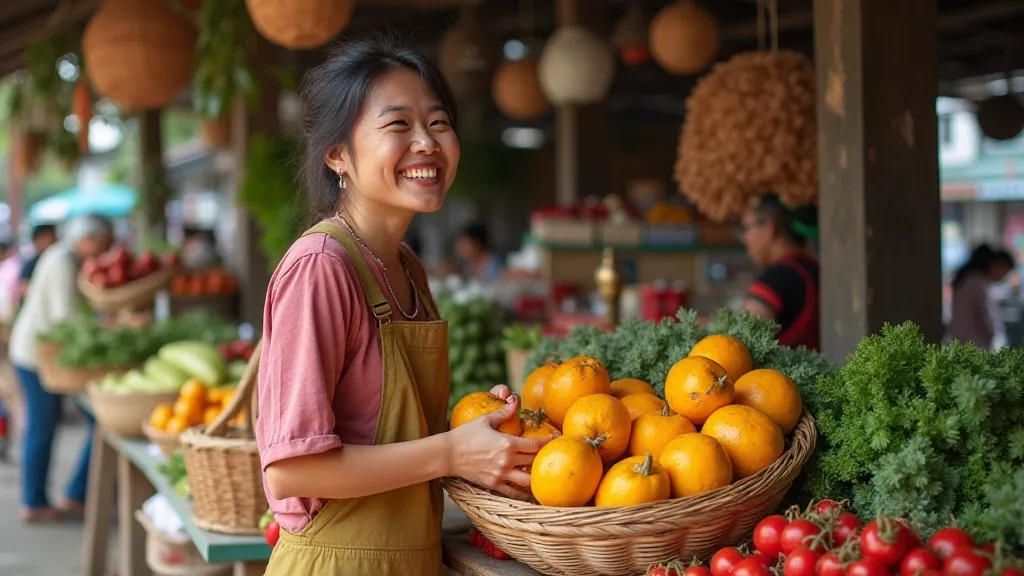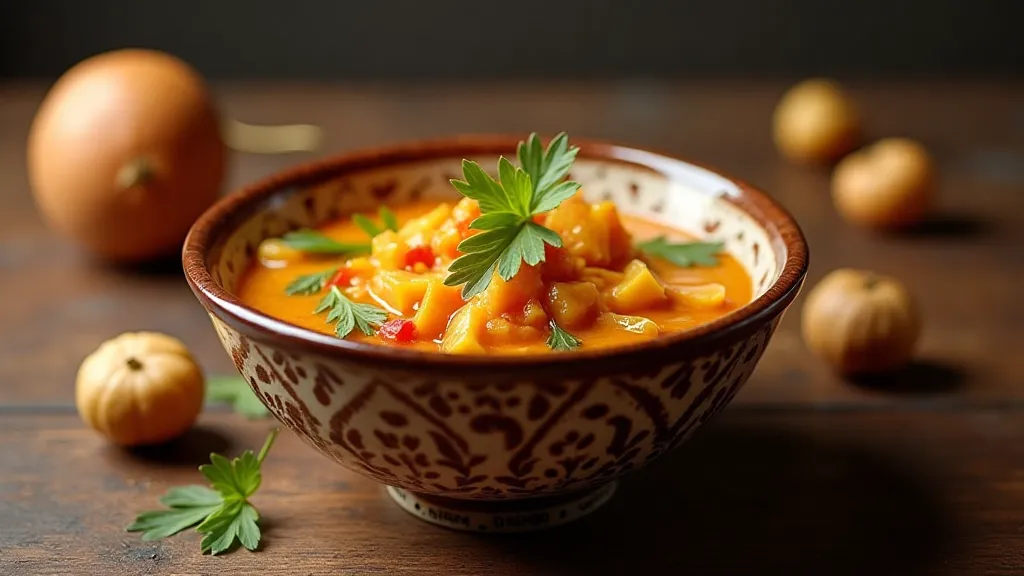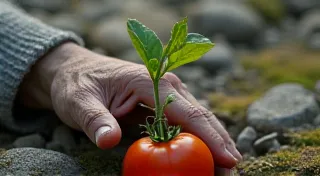The Tamarind's Tang: Southeast Asia's Sour-Sweet Legacy and its Culinary Narrative
Southeast Asia. The very name conjures images of lush jungles, vibrant markets overflowing with exotic fruits, and the intoxicating aroma of spices hanging heavy in the air. It's a region of incredible biodiversity and even more incredible culinary traditions. While lemongrass, galangal, and chilies certainly contribute to the distinctive flavors of this corner of the world, there's one ingredient that stands out, a quiet yet powerful force shaping countless dishes from Pad Thai to rendang: the tamarind. Its journey through history is as complex and fascinating as its taste – a perfect marriage of sweet and sour that reflects the region’s own intricate cultural tapestry.
My first real encounter with tamarind wasn’s in a sophisticated restaurant. It was in my grandmother's kitchen, a small, steamy space filled with the comforting sounds of sizzling oil and clanging woks. She was a Malaysian Chinese woman, and her cooking was a direct line to her ancestors. I remember watching, mesmerized, as she meticulously cracked open the dark, sticky pods, extracting the pulp to create a rich, brown sauce for her Char Kway Teow. It wasn't just an ingredient; it was a memory, a connection to her past, and a vital part of her identity. That early exposure ignited a lifelong fascination with food and, specifically, the hidden stories embedded within regional cuisine.

A History Rooted in Trade and Migration
The tamarind (
Think about the historical context. Southeast Asia has been a crossroads for centuries - a meeting point for Indian, Chinese, Arab, and European influences. Each culture left its mark, not just in architecture and religion, but also in the food they introduced and adapted. The tamarind’s journey mirrors this very process. It was embraced, integrated, and ultimately transformed into an integral part of local culinary traditions.
The Culinary Landscape: A Region Defined by Sourness
What makes the tamarind so pervasive in Southeast Asian cooking? It's more than just a flavor profile; it's a fundamental aspect of the region’s culinary philosophy. The inherent sourness of tamarind provides a crucial counterpoint to the richness of coconut milk, the sweetness of palm sugar, and the heat of chilies. It balances and elevates other flavors, creating a complexity that’s uniquely Southeast Asian.
Consider the diversity. In Thailand, you're hard-pressed to find a dish that doesn’t benefit from a touch of tamarind. Pad Thai, the quintessential Thai street food, owes its signature tang to this fruit. In Malaysia and Singapore, it’s a vital component in Assam Laksa, a spicy fish noodle soup. Across the archipelago of Indonesia, it’s used in rendang, a slow-cooked meat dish, to balance the richness of the spices. Even in the Philippines, you've got Sinigang, a sour soup named directly after the tamarind.
Beyond the Taste: Cultural Significance
The cultural significance of tamarind extends far beyond the kitchen. It’s often incorporated into traditional medicines, believed to have cooling properties and aid digestion. It’s also used in traditional ceremonies and festivals, symbolizing prosperity and good fortune. The fruit’s ability to preserve food has, historically, been critical to survival, fostering a deeper appreciation and respect for its value. The ingenuity demonstrated in utilizing ingredients for multiple purposes—as both a culinary element and a medicinal tool—highlights a holistic approach to food that’s sadly lost in many modern food systems; we see similar cultural threads woven into the food heritage of other regions, for example, how Scottish broth embodies a legacy of resourcefulness and survival born from the landscape.
My uncle, a retired fisherman from Penang, once told me a story about how his grandfather would use tamarind to pickle fish, preserving it for long journeys at sea. It wasn't just about sustenance; it was about resilience, about honoring traditions passed down through generations. That simple act, that humble fruit, embodied a spirit of ingenuity and resourcefulness that’s deeply ingrained in the region's culture. The reliance on readily available, locally sourced ingredients reflects a philosophy that prioritizes sustainability and minimizes waste—a concept that’s regaining prominence as we grapple with the environmental impact of industrial food production.

The Craftsmanship of Flavor and the Preservation of Tradition
Thinking about tamarind also makes me contemplate the craftsmanship involved in traditional Southeast Asian cooking. There's an artistry in balancing flavors, in understanding how each ingredient interacts with another. Modern food production can often strip away that sense of connection – the knowledge of where ingredients come from, the understanding of how to coax the best flavors out of them. The desire to capture the essence of place and tradition in food often leads to incredibly nuanced and complex flavor profiles – something that transcends mere sustenance and becomes a form of cultural expression. The dedication to preserving those traditions is a powerful act of resistance against homogenization, reminding us of the beauty and richness that exists in local foodways.
Recently, there's been a renewed interest in preserving traditional cooking methods and sourcing ingredients locally. Small-scale farmers are working to cultivate high-quality tamarind, ensuring that future generations can experience the true essence of Southeast Asian cuisine. This revival isn't just about preserving ingredients; it's about preserving the knowledge and skills that have been passed down through generations—the techniques for cultivating, harvesting, and preparing food in ways that honor the land and its people. The connection between food and identity is profound, and this renewed focus on local ingredients and traditional methods reflects a desire to reclaim a sense of belonging and cultural pride.
A Sour-Sweet Legacy
The tamarind’s journey through Southeast Asia is a microcosm of the region’s own story – a story of trade, migration, adaptation, and resilience. It's a testament to the power of food to connect us to our past, to our cultures, and to each other. The next time you savor a plate of Pad Thai or a bowl of Assam Laksa, take a moment to appreciate the humble tamarind, the quiet force shaping those incredible flavors. It’s more than just an ingredient; it's a symbol of a vibrant and enduring culinary legacy. It's a taste of history, a bite of culture, and a testament to the enduring power of a sour-sweet legacy. Just as the scent of lavender evokes images of sun-drenched fields in Provence, the unique tang of tamarind carries the weight of centuries of history and cultural exchange.

The complexities of flavor, the preservation of heritage, and the inherent human desire to connect through food are powerful forces that shape our world. It's a sentiment echoed in culinary traditions around the globe, much like the careful tending of fields used to produce paella, demonstrating how food can be inextricably linked to a region’s identity and history.
The tamarind’s journey is a beautiful reminder of the shared human experience – a testament to the power of adaptation, the importance of tradition, and the enduring legacy of food.





